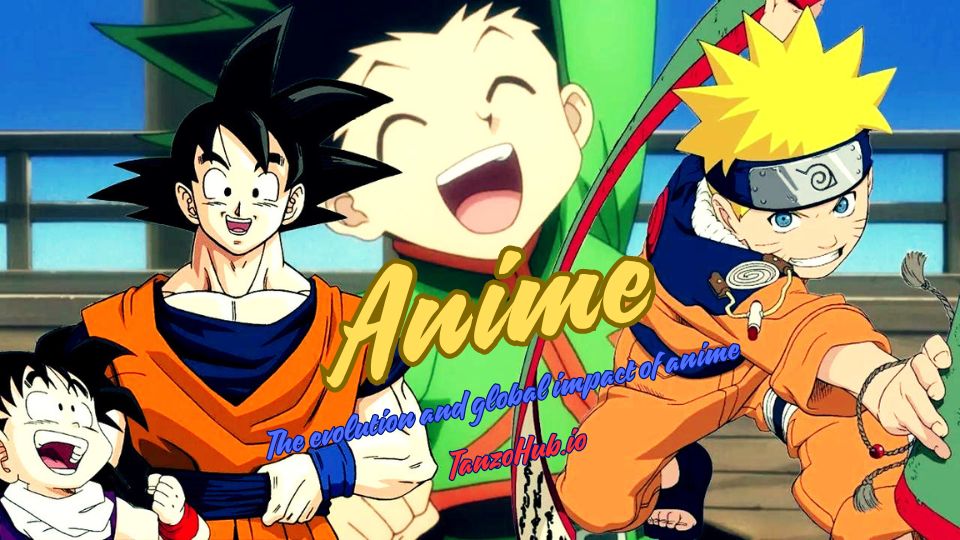Anime once a niche hobby has exploded into mainstream tradition. The vibrant inventive storytelling captivates audiences globally. From TV indicates to functional movies anime gives a unique reveal. Its wealthy narratives often discover complicated subject matters. This genre’s various patterns attract diverse tastes. Fans range from kids to adults, spanning generations. The medium’s worldwide impact is simple. This article delves into anime’s boom and its effects. Let’s discover how anime shapes international leisure. We’ll additionally observe its origins and evolution.
Origins and Evolution of Anime
Anime’s roots hint again to early 20th-century Japan. Pioneers like Osamu Tezuka revolutionized animation. He created iconic characters, putting new requirements. Over the decades, anime evolved with generations. The 1960s noticed the upward thrust of famous TV collections. Shows like “Astro Boy” have become instantaneous classics. In the 1980s, anime gained worldwide popularity. Blockbusters like “Akira” have taken aback international audiences. This generation marked anime’s golden age. Modern anime now blends conventional and virtual strategies. It keeps innovating and enlarging its reach.
Impact on Global Pop Culture
Anime has profoundly impacted global popular culture. Western audiences embraced anime enthusiastically. Shows like “Naruto” and “Dragon Ball” have become family names. Cosplay and conventions celebrate this colorful way of life. Merchandise, from collectible figurines to garb, proliferates. Streaming services provide great anime libraries. This accessibility fuels its growing recognition. Influences appear in Western media and style. Anime’s aesthetic even shapes video game layouts. This cultural alternate enriches each of the Eastern and Western artwork forms.
Diverse Themes and Genres
Anime’s numerous topics cater to extensive audiences. Genres range from movement to romance, sci-fi to delusion. “Attack on Titan” thrills with intense battles and drama. “My Neighbor Totoro” charms with its whimsical innocence. Psychological thrillers like “Death Note” hold visitors on edge. Sports anime, including “Haikyuu!!,” inspire and entertain. The slice-of-life collection depicts everyday challenges and joys. Horror anime explores darkish, unsettling narratives. Each style gives unique storytelling strategies. This variety ensures something for each viewer.
Anime’s Artistic Innovation
Anime’s artistry sticks out in visual media. Creators test with specific styles and techniques. Hand-drawn animation keeps a nostalgic attraction. Digital gear decorates visual outcomes and precision. Color palettes often evoke particular moods and atmospheres. Detailed backgrounds create immersive worlds. Fluid motion brings characters and scenes to lifestyles. Innovative digital camera angles and views add depth. Symbolism and visual metaphors increase narratives. Music and soundscapes complement the visual storytelling. This combination of art and paperwork makes anime a unique medium.
Community and Fandom
Anime fandoms shape colorful, supportive groups. Fans bond over shared pastimes and passions. Online boards and social media enlarge this connection. Conventions provide areas for enthusiasts to gather and have a good time. Cosplayers showcase creativity and willpower. Fan artwork and fiction keep the subculture alive. Fandoms support creators via merchandise and activities. This community fosters a feeling of belonging. Fans regularly introduce anime to new audiences.
Challenges and Controversies on Anime
Anime faces challenges regardless of its fulfillment. Piracy threatens the industry’s economic stability. Creators struggle with stressful painting situations. Cultural differences, on occasion, spark controversy. Misunderstandings can result in poor stereotypes. However, efforts to bridge gaps are preserved. Collaborations between East and West increase information. Support for prison streaming offerings combats piracy. These challenges spotlight areas for increase and development.
The Future of Anime
Anime’s future seems promising and dynamic. Technological improvements will form new traits. Virtual truth ought to offer immersive viewing reviews. AI may decorate animation strategies further. Global collaboration will probably boom. Diverse voices and memories will increase the style. Environmental and social subject matters may additionally advantage prominence. Anime will hold to persuade and encourage. Its cultural significance will best grow more potent.
Conclusion
Anime’s adventure from a spot Japanese art form to a global cultural phenomenon is excellent. Its wealthy records, various genres, and artistic innovation have captivated audiences worldwide. From its origins with pioneers like Osamu Tezuka to modern masterpieces, anime continues to adapt and have more considerable influence. The dedicated fan groups and increasing global collaborations highlight anime’s enduring attraction and capacity for future increase. As the era advances and new stories emerge, anime will remain an adequate pressure in the leisure enterprise. The colorful, innovative worlds of anime will inspire and enthrall audiences for generations to return.
Anime has influenced Western media, fashion, and video game design. Shows like “Naruto” and “Dragon Ball” have become household names. Cosplay and conventions celebrate anime culture, and merchandise like figurines and apparel are widespread.
This industry faces challenges like piracy, demanding work conditions for creators, and cultural misunderstandings. Efforts to address these issues include promoting legal streaming services, advocating for creators’ rights, and fostering East-West collaborations to increase understanding.
Anime began in early 20th century Japan. Pioneers like Osamu Tezuka revolutionized the medium with iconic characters and innovative techniques. The 1960s and 1980s were significant periods, with series like “Astro Boy” and films like “Akira” gaining international acclaim.








1 thought on “From Origins to Phenomenon The Cultural Evolution of Anime”